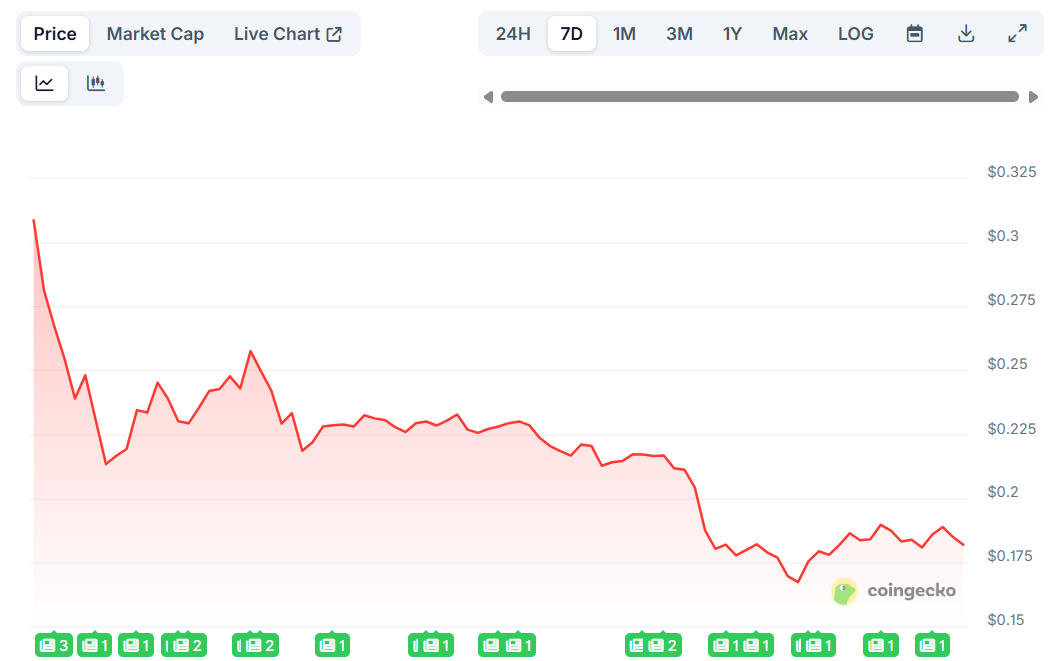World Liberty Financial froze Justin Sun’s wallet after the TRON founder moved millions of dollars in WLFI tokens. The action sent shockwaves through the crypto community and raised questions about project governance.
Justin Sun (@justinsuntron) has deposited 5.289M $WLFI, worth $1.19M into #HTX over the past 2 days.
Justin has spent $75M to buy 3B $WLFI and received 600M $WLFI as a token unlock.
Address: 0x5ab26169051d0d96217949adb91e86e51a5fda74
Data: @nansen_ai pic.twitter.com/KTOOchpT66
— Onchain Lens (@OnchainLens) September 3, 2025
The blacklist came after blockchain trackers detected Sun transferring 50 million WLFI tokens worth $9.12 million to a new wallet. Analysts suggested these tokens were headed to the HTX exchange where Sun has been active.
On-chain data from Arkham confirmed the blacklisted address belongs to Sun. The freeze locked 540 million unlocked WLFI tokens and 2.4 billion locked tokens associated with his accounts.
JUST IN: JUSTIN SUN’S ADDRESS BLACKLISTED FOR TRANSFERRING $9M $WLFI pic.twitter.com/O25281D7mi
— Arkham (@arkham) September 4, 2025
Sun had invested $75 million to acquire approximately 3 billion WLFI tokens. His holdings made him one of the largest investors in the project at launch.
The token experienced extreme volatility in its first trading hours. WLFI debuted with over $1 billion in trading volume but quickly dropped from $0.40 to under $0.20.
Blockchain analysis revealed Sun used multiple methods to move tokens. Some transfers appeared to exceed the publicly outlined vesting schedule.
Additional data showed Sun deposited over 5.28 million WLFI worth $1.19 million into HTX over two days. An HTX-linked wallet also moved 60 million WLFI to a Binance deposit address within 32 hours.
Sun denied any market manipulation in response to the accusations. He claimed the transactions were routine tests and address splitting activities.
Our address only carried out a few general exchange deposit tests with very small amounts, followed by an address dispersion. No buying or selling was involved, so it could not possibly have any impact on the market.
— H.E. Justin Sun 👨🚀 (Astronaut Version) (@justinsuntron) September 4, 2025
The TRON founder insisted no actual buying or selling occurred. He stated such small movements could not affect WLFI’s market price.
However, the timing of the transfers before the price drop fueled speculation about insider selling. Critics pointed to the substantial amounts moved as evidence against Sun’s claims.

The wallet freeze divided the WLFI community over centralization concerns. Many questioned whether a decentralized project should have the power to blacklist major investors.
Some supporters argued the action was justified to prevent market manipulation. They pointed to Sun’s large holdings and potential influence over trading.
Others criticized the move as contradicting the project’s decentralized governance promises. The ability to freeze accounts raised questions about true decentralization.
HTX’s offer of 20% APY on WLFI deposits added to the controversy. Critics wondered if user funds were being used to suppress prices on other exchanges.
Industry observers noted the vulnerabilities exposed by the launch. The incident highlighted issues with token distribution and concentrated insider ownership.
Only 6.8% of WLFI’s supply officially unlocked at launch. However, actual trading volumes suggested greater liquidity from insider selling pressure.
The price action transformed what should have been a positive debut into a cautionary tale. The events demonstrated the challenges facing projects with concentrated ownership structures.
Current Arkham data shows Sun still controls approximately 595 million WLFI worth $107 million. This represents his unlocked allocation, about 20% of his total holdings.
WLFI has partially recovered to $0.18 but remains down over 15% from previous trading levels.
The post World Liberty Financial (WLFI) Price: Drops 50% After Justin Sun Wallet Blacklist appeared first on CoinCentral.
Also read: FOMO Ends In Pain: WLFI Whales Suffer Millions In Loses On Price Collapse